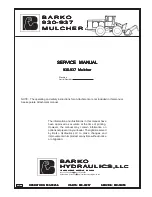
Get Started with Your Nicolet Summit Spectrometer
Potential Hazards during Maintenance
You may be exposed to different hazards while performing maintenance on the instrument than you
would encounter during normal use. During maintenance, the primary hazards involve purging the
instrument and working with the instrument’s internal components.
Purging the Instrument
In especially humid environments, we recommend installing a source of clean, dry air or nitrogen to
purge the spectrometer. Purging the instrument can help protect internal optical components from
damage caused by a moist environment or corrosive solvents, and it can ensure more accurate results.
See
"Install and Maintain a Purge Kit"
for details on purchasing and installing a purge kit for your
spectrometer.
DANGER
Avoid fire and explosion hazard.
l
Use only dried air or nitrogen to purge your spectrometer.
l
Never use a flammable, combustible, or toxic gas to purge this instrument. The
purge gas must be free of oil and other reactive materials. Heat from the source
or from laser absorption may ignite flammable gases or reactive materials in
the purge gas.
Working with Internal Components
Typically, there should be no reason for you to remove the instrument cover or attempt to replace
internal components. However, if you need to remove the cover for maintenance, be aware that you risk
being shocked, burned, and exposed to laser light.
CAUTION
Avoid shock hazard.
Even after this instrument has been disconnected from all voltage sources,
capacitors may remain charged for up to 30 seconds and can cause an electrical
shock.
12
Nicolet Summit LITE FTIR Spectrometer User Guide
Thermo Scientific
















































